These Fish Are Highest in Omega-3s

Fabulous Fats
Also called oily fish, fatty fish are the best sources of two of the three most important omega-3s (EPA and DHA). These fatty acids are considered the good fats, unlike the bad saturated fats in meat. They may deliver huge health benefits for your heart, brain, lungs, and circulation. High doses can help slow plaque buildup in your arteries and lower some types of fat in your blood. Lean fish like cod, catfish, and mahi mahi have less fat in their tissues, so they pack less fatty acids.
Swipe to advance

2
/
14
Albacore Tuna
Aim to eat oily fish 1-2 times a week. A serving is about 3.5 ounces cooked, depending on your weight. Canned tuna in a sandwich or salad is a quick fix for not a lot of money. Albacore has about 3 times as much omegas as skipjack or “light” stuff. With fresh tuna, the belly is fattier than the meat on either side.
Swipe to advance
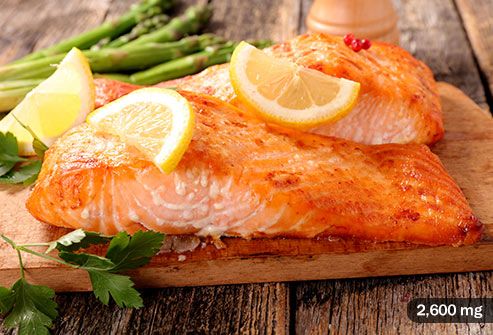
3
/
14
Farmed Salmon
There’s a good reason why salmon is a poster star for heart-healthy fish. And those raised in fish farms have some of the highest levels of omega-3s of any seafood. Bonus: They’re usually much cheaper than wild salmon.
Swipe to advance
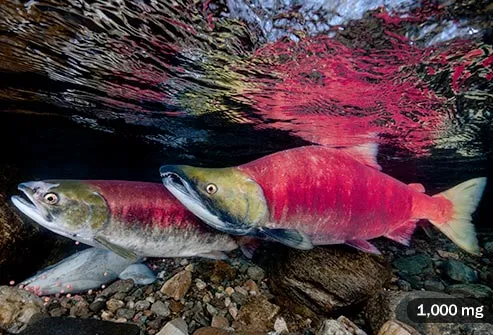
4
/
14
Wild Salmon
They eat mostly algae and plankton, so they tend to be less fatty than their farmed cousins. But wild salmon is still a great source of omegas. They’re an especially good pick for pregnant and nursing women because, like farmed salmon, they tend to have lower levels of mercury, PCB, and other toxins. If you eat your own catch, pay attention to the advisories for rivers, lakes, and other bodies of water.
Swipe to advance
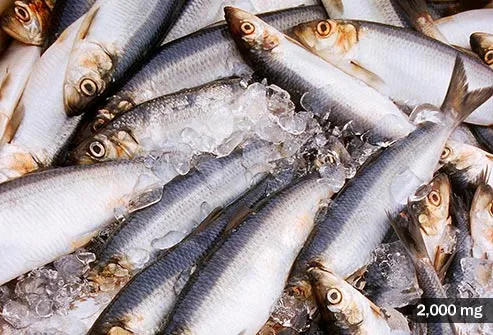
5
/
14
Atlantic Herring
It’s often pickled in vinegar and eaten throughout Scandinavia and parts of Europe. You can also pickle the fillets in wine or cream. Channel your inner Swede and serve it with hardboiled egg, sour cream, or new potatoes. Or swap it for the same-old tuna in a sandwich.
Swipe to advance
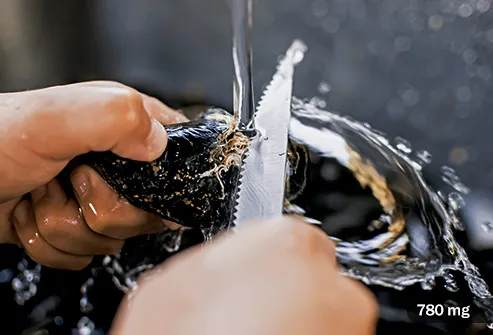
6
/
14
Mussels
These are technically shellfish, not oily fish. But no matter. They’re still loaded with fatty acids. In fact, make mussels a top pick if you like seafood that comes in shells, not with scales. Ounce for ounce, they have way more omegas than lobster, clams, shrimp, and scallops.
Swipe to advance
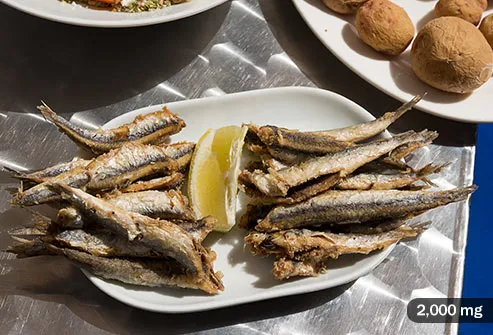
7
/
14
Anchovies
They’re so much more than the stinky, skinless salt strips that your quirky cousin gets on her pizza. The Spanish marinate them with their silvery skins in oil and vinegar for a tapas called boquerones and eat them with bread and beer. Like herring, these tiny guys put up big numbers for omega-3s.
Swipe to advance
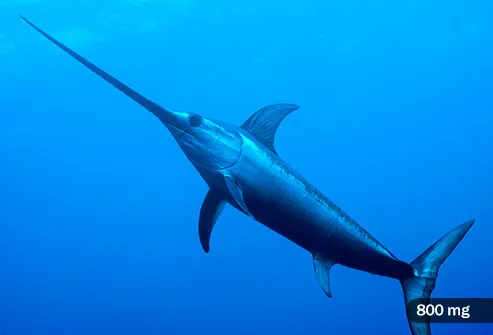
8
/
14
Swordfish
Their meaty and mild meat is perfect for grilling. But swordfish and other hunters eat smaller fish. So they pick up more mercury and other pollutants from their diet. When you eat seafood with high levels of methylmercury in their tissues, it can affect your brain and your nervous system. It can be especially harmful to unborn babies and infants. Children and women who are pregnant or nursing should avoid swordfish, along with shark, tilefish, king mackerel, and marlin.
Swipe to advance
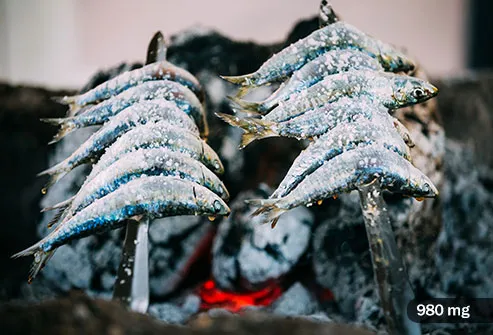
9
/
14
Sardines
You may have seen these skinny guys sold in flat tins. You might not know you also can buy them fresh and roast them whole. And because they’re smaller and live short lives, they’ve got far less mercury built up in their flesh than larger, older fish.
Swipe to advance
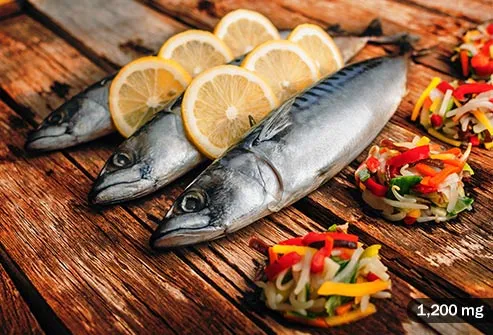
10
/
14
Atlantic Mackerel
These strong-flavored fish max out at around 2 pounds. But they can live as long as 20 years! Grill them whole or filleted with olive oil, salt, and lemon. As with tuna, type matters here. Atlantic mackerel has several times more omegas and way less mercury than the much larger king mackerel, aka kingfish.
Swipe to advance
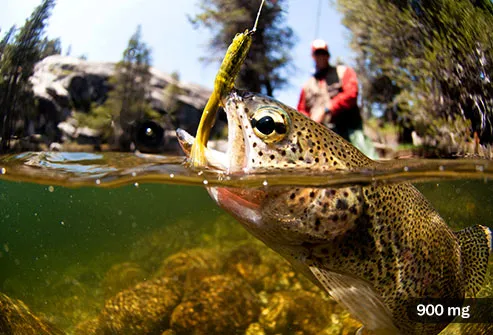
11
/
14
Trout
A prize catch for any freshwater anglers, it’s perfect to pan fry or roast over the campfire. You might even find it smoked by the can. Like salmon, trout combines high levels of EPA and DHA and lower levels of mercury. So it’s a good way for pregnant women and breastfeeding mothers to meet their recommended target of two to three seafood servings every week.
Swipe to advance
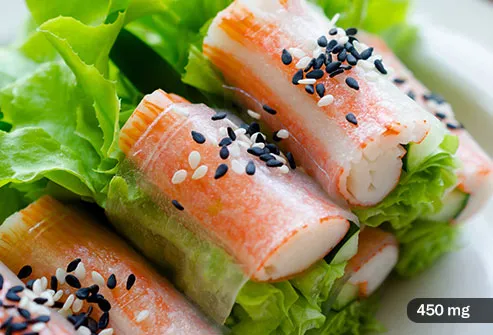
12
/
14
Alaska Pollock
If you’ve eaten fish sticks, you’ve probably had it. Also called walleye, it’s the most commonly caught seafood in the U.S. Its flesh is mild and white, so it’s ideal for imitation crab, shrimp, and scallop. Pollock is usually low in mercury and other toxins. It’s also good for the environment. That’s because it’s fished in the wild and government agencies make sure that commercial fishers don’t catch too much.
Swipe to advance
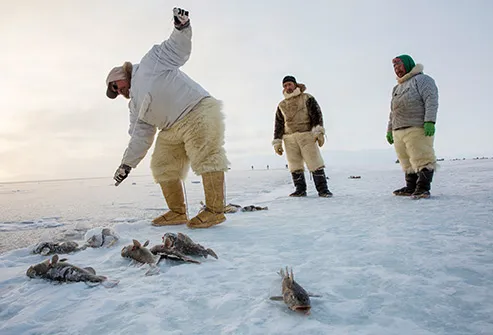
13
/
14
The Evidence
The hoopla over omega-3s started in the early 1980s with a report that Greenland Inuit, whose diet is high in animal fat but who also eat a lot of cold-water fish, had surprisingly low rates of heart disease. Since then, studies have suggested that on the whole, eating oily fish may do your body more good than any possible harm from mercury and other contaminants.
Swipe to advance
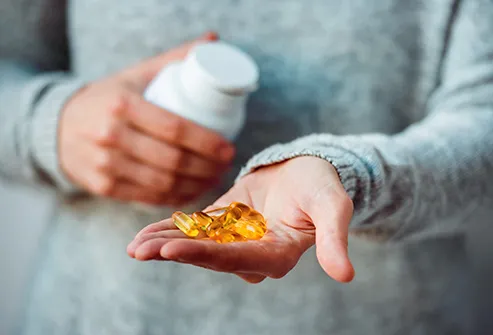
14
/
14
Fish Oil Pills
Supplements may not help you much. A recent review of 10 studies found that older adults with heart disease and related conditions who took omega-3 fatty acids every day did not seem to have fewer heart attacks or strokes. They took supplements in doses ranging from 226-1,800 milligrams. It’s unclear if higher doses might make more of a difference.
Swipe to advance
- Get link
- X
- Other Apps